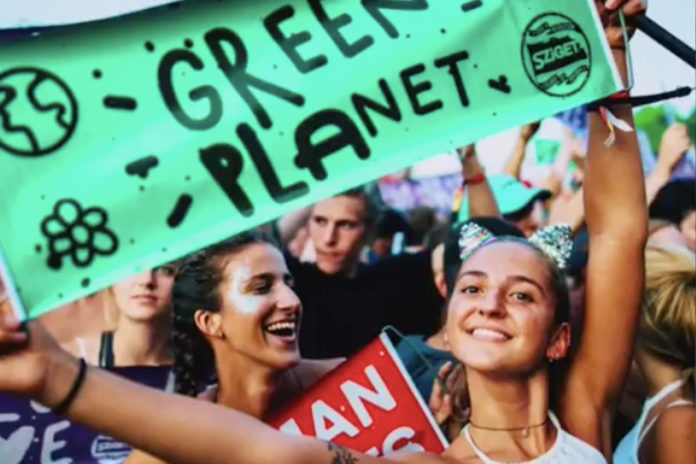Set on a leafy 108-hectare island on the Danube in Budapest with more than 1,000 performances across 60 stages, for seven days with half a million people from all over the world, Sziget Festival has established itself as one of the largest and most popular festivals in the world.
Acknowledging their responsibility to minimise the festival’s ecological footprint, Sziget Festival has been committed to reducing its environmental impact for almost 20 years. 2019 sees Sziget launch its ‘Green Sziget’ sustainability programme, aiming to minimise its potential negative impact on the natural world.
With a dedicated approach towards raising awareness for environmental sustainability during the lead up, duration and break down of the festival, Sziget has determined five important key areas of impact creating a strategic sustainability practice applicable to each area. This will encourage a steady improvement in becoming as environmentally friendly as possible with the hope of also inspiring neighbouring events.
Waste production and management
About 30-40% of the waste produced during the event can be reused. The goal is to minimise waste and achieve a 50% recycling rate at least.
The team strives to achieve this by: selling drinks in reusable cups; allocating freshwater points for water refill; asking vendors to distribute napkins, take away boxes, utensils, plates and straws made from biodegradable materials only; promoting its Don’t suck! programme, encouraging attendees to refuse straws; handing out pocket ashtrays; collecting cardboard; and installing recycling bins.
Energy and emissions
Sziget will create a dining block where environmentally-conscious vendors gather, and meal preparations will produce lower CO2 emissions. Commercial units will be equipped with standalone meters, providing them with energy efficiency advice.
Volunteers will help to monitor the proposed measures which were implemented by festival partners (LED lightning throughout the festival site, renewable energy to power various elements of the festival, as well as city power used throughout the site (no aggregators) and ensuring green energy is used where possible).
Transportation
Just a few examples of where Sziget is reducing transportation to the festival includes: promoting train services and special shuttle trains for all visitors; providing a shuttle bus service between Budapest Airport and Sziget; and promoting the Sziget Boat which runs between Jászai Mari Square and Sziget Festival.
Water
Conscious water-use is a must in today’s world and Sziget Festival is applying measures to protect water courses. The festival is committed to minimise water use and take care of the waterways.
Land Use
As Sziget Festival takes place on the beautiful island of Óbuda every year, it is dedicated to do everything in order to come back and experience the breath-taking diversity of nature year after year.
The measures taken to achieve this, include:assessing the environmental impacts of the festival; re-cultivating the territory of the festival, to give it back to the public in the condition they received it; and introducing biodegradable cleaning chemicals.










